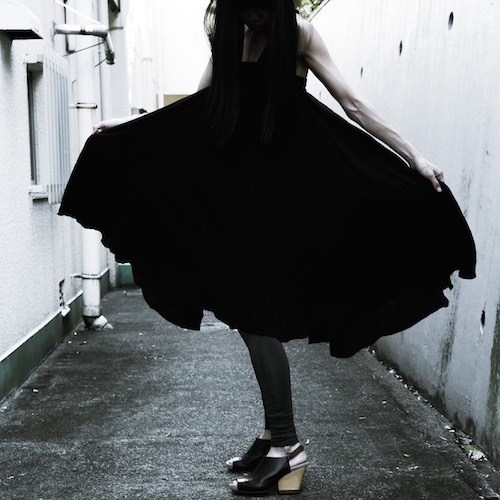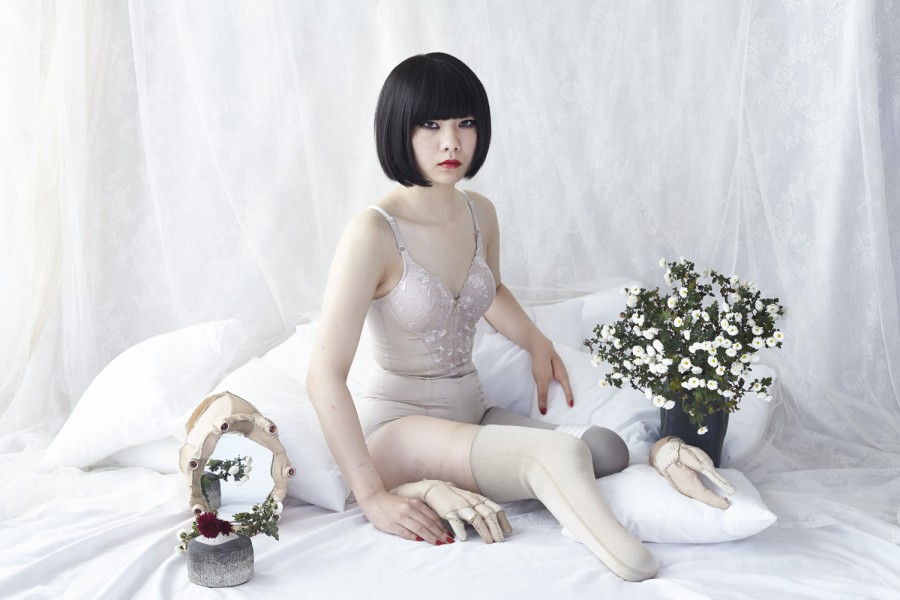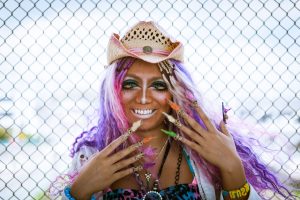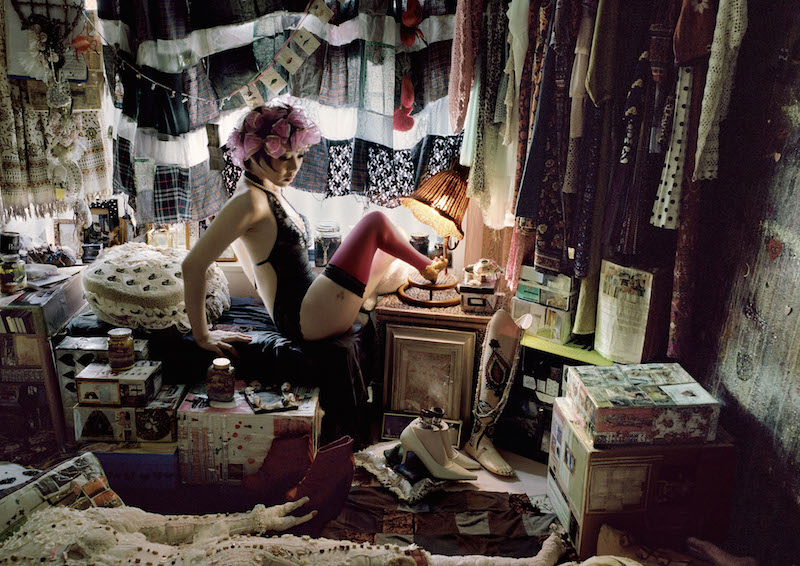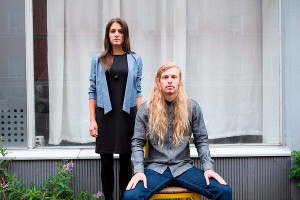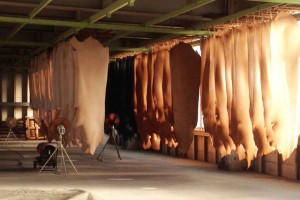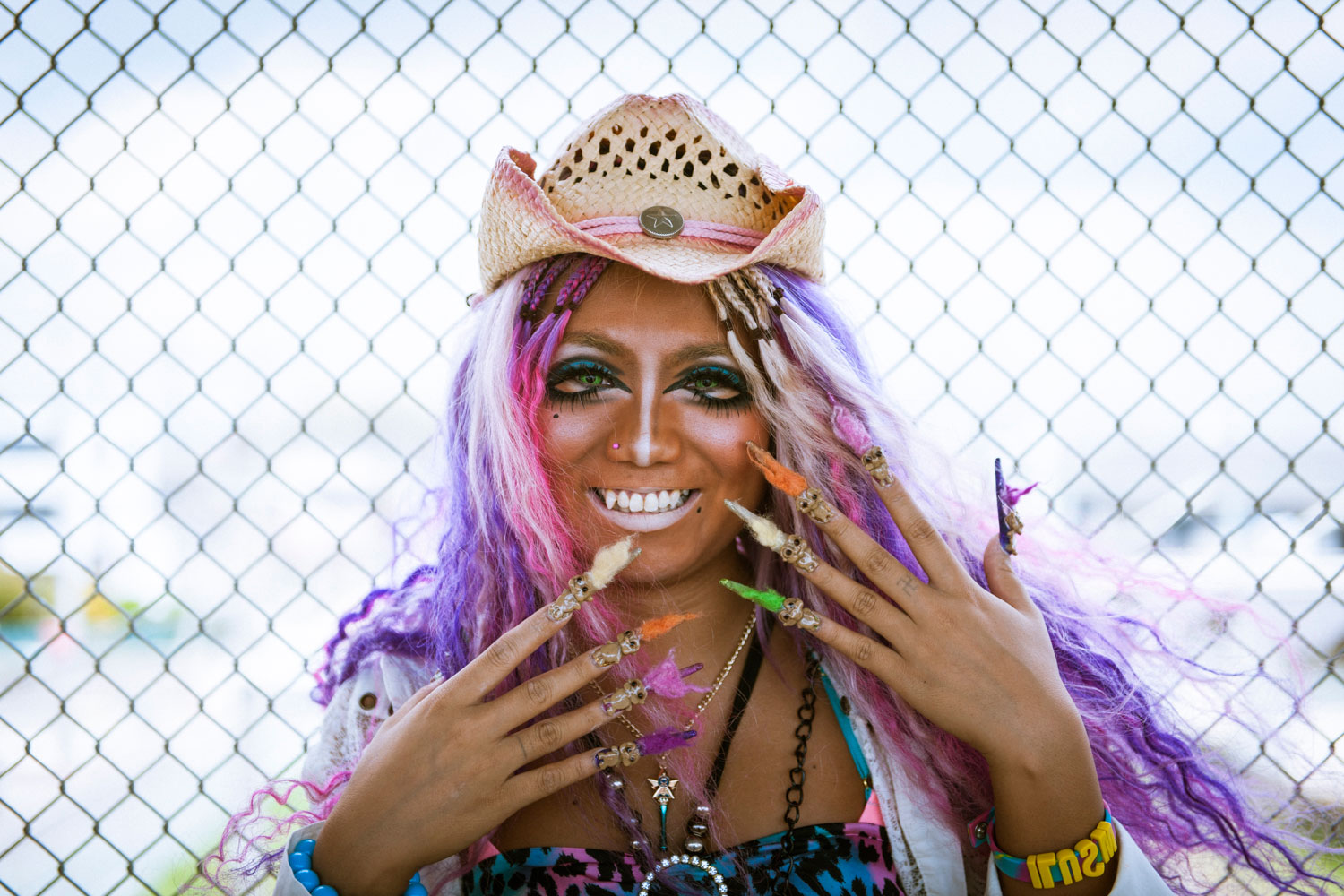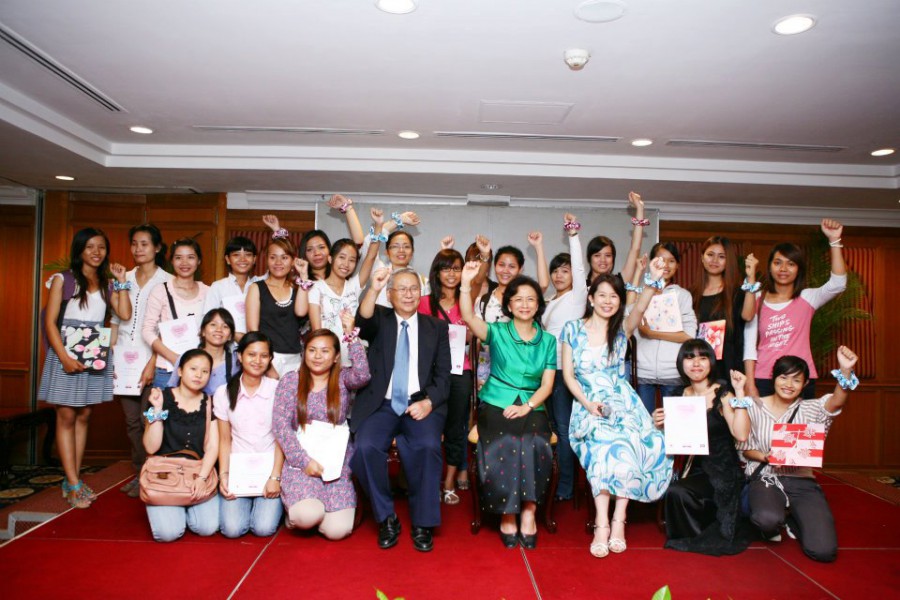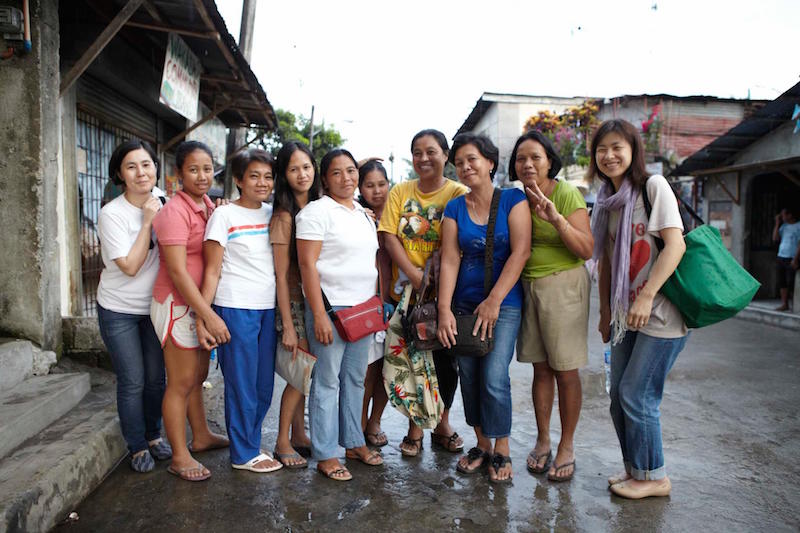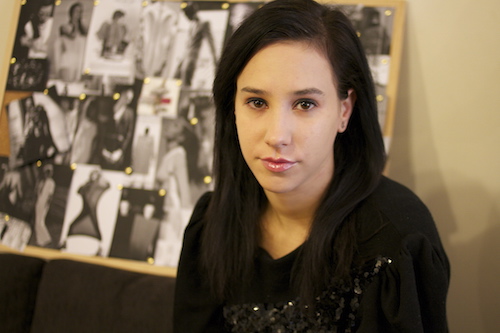The Art Award, Tokyo Marunouchi, marking its sixth year this year, is designed to help identify and provide support for young artists. Over the past five years, it has become widely known as a gateway to success for young artists. This year’s grand prix was given to Mari Katayama (24). As a result of tibial hemimelia, a deficiency affecting the development of the tibia, she had both legs amputated at nine-years-old, making her an artist with prosthetic legs.
Social Welfare and the High Heel Project
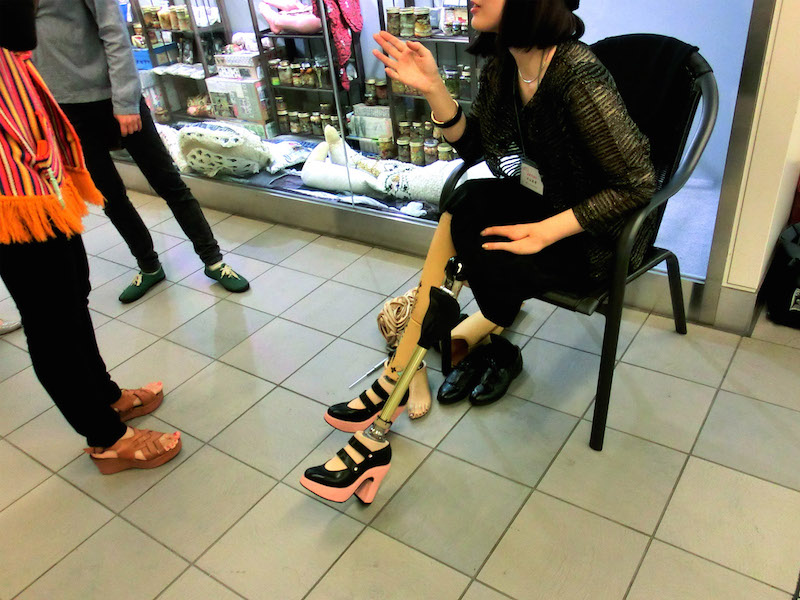
At Art Award Tokyo Marunouchi2012, http://www.shell-kashime.com/
“Dressing is not considered rehabilitation. This is what I did for myself as I did research to create my high heels. Social welfare is for supplementation, for filling a deficit. More than enough to live an ordinary life is excluded.
“Patient, doctors, and therapists are desperately working in rehab. Patients crawl––literally. They are on their knees trying to walk again. You can’t put how they risk their lives into words. Doctors and therapists who work together are at risk as well. How can you talk about what to wear today in that kind of moment? Even myself, I don’t think I would be happy talking about what color I should make my legs when I’m like that. These patients are at the risky stage of life––can they walk or not, or will they have another tomorrow. They are talking about whether they can keep their own legs or not. If they can keep their own legs, they are talking about the length that they will keep. I don’t think anyone would feel like saying, ‘Let’s dress up and cheer ourselves up’ in that kind of moment.
“There are people who would say, ‘you’ve got enough because you are able to walk again,’ or ‘don’t put money into something extra.’ That’s because our financial aid for prosthetic legs comes from taxes. With so many voices and faces on social welfare, there are many people who gave up on expressing their feelings about how they want to dress because they felt guilty.
“I’m 180 centimeters tall with my legs on, and if I wore these 12 centimeter high heels, I would totally stand out in the crowd. I thought if physically challenged people see me in high heels they may feel strong enough to say, ‘Hey, there’s a crazy girl, why can’t I wear cool jacket too?’ Even putting catalogues for high heels at prosthetic factories would be good, because amputees could see that there’s a choice. I think it is fine too for someone to say that they’ve got enough and they don’t care about fashion. But I just wanted to say that we can choose to dress up or not, we have the choice with these high heels.”
About Her Art
“Artwork is simply a natural part of my life like brushing my teeth. So my works don’t have stories like ‘this drawing expresses my desperate feeling’ or anything like that. This is what I have done daily since I was small. I sew and draw whenever I feel like it. I don’t if I don’t feel like it. I don’t even dream about getting paid for my artwork. It’s just a natural thing to do.
“But I started to think again; maybe artwork can be a good way to express my feelings. People don’t care about anything. They don’t pay any attention. So, if you want to express your feelings, you have to speak loud and risk yourself. Sometimes, no words can express your feelings. But maybe the artwork could, without words.”

